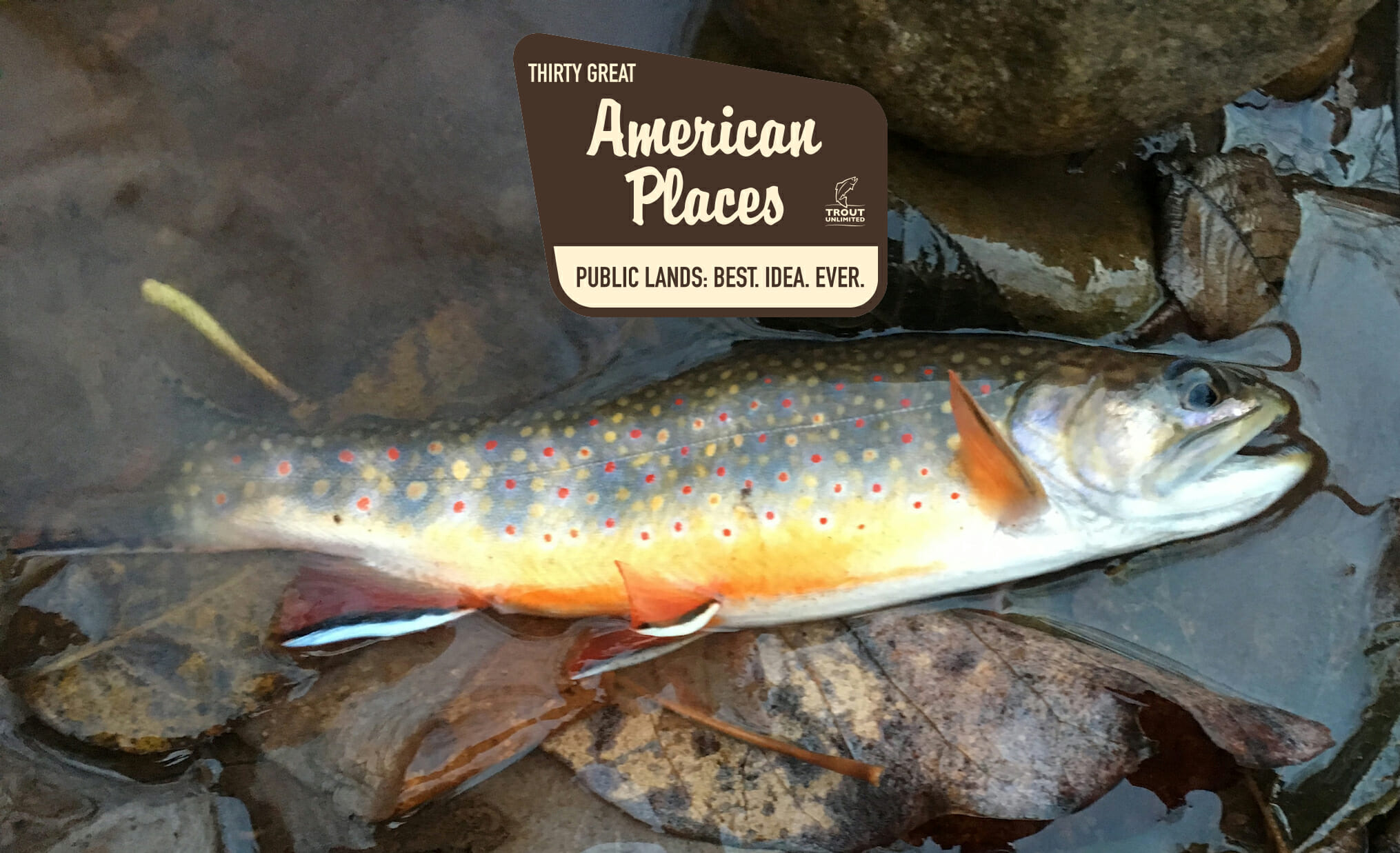Region: Central Appalachia
Activity: Fishing; Hunting
Species: Ruffed Grouse; Brook, rainbow and brown trout
Where: Monongahela National Forest (known locally as “the Mon”) stretches over 919,000 acres of rugged, mountainous terrain along the eastern edge of West Virginia. Though it rests within a day’s drive of half of America’s population, it boasts five federally-designated wilderness areas and provides habitat for black bear, wild turkey, white-tailed deer, snowshoe hare, woodcock, grouse, beaver, red and gray fox, mink, bobcat, fisher, otter…and wild trout.
Why: Almost a thousand miles of rivers and streams…many holding native brook trout.
“The Mon has some of the best brook trout resources on the east coast,” said Lee Orr, council chair for Trout Unlimited in West Virginia. “There are hundreds of small creeks that hold brookies. They move higher and in higher in the systems as the weather warms. There are also bigger rivers that hold wild rainbows and browns. Since the Mon is national forest, you have unfettered access. I love the Mon for hunting ruffed grouse too. It’s the only place I can find them. I live in the city of Charleston, and the Mon is one of the reasons I stay here. A trip to the high country sets things right. Things get better with every 1,000 feet of elevation gain.”
It’s worth noting that some of the bigger rivers – like the Greenbrier and South Branch Potomac – also offer first class smallmouth bass angling.
Local Knowledge: Anglers should be especially stealthy as they approach pools or other fishy spots, as the brookies are spooky. “The fish are not too picky about flies,” Orr added, “but they are very wary of shadows, even false casts. But if you don’t spook them, they’ll likely take almost any attractor pattern.”
TU Initiatives: TU has brought a host of agencies and landowners – and almost 2,400 volunteers – together to protect and enhance brook trout habitat in the Mon. Work has included 45 miles of in-stream restoration, installation of 23.5 miles of conservation fencing in collaboration with private landowners, planting of 300 plus acres of trees along streams, reclamation of 50+ miles of unused roads, and replacement of culverts to open up more than 35 miles of headwater streams for brook trout refuge and spawning. TU has also been monitoring shale and gas development on the 38 percent of forest lands where the oil and gas rights are privately owned, advocating strict monitoring, reporting and inspection of drilling-related activities to limit minimize environmental impact.
Make a Difference: Hunters and anglers recognize that our country needs energy and we know it is possible to develop resources and protect vital fish and wildlife habitat at the same time. But we also know from experience that irresponsible development negatively impacts fish and wildlife populations and hunting and angling opportunities. Check out this report from Sportsmen for Responsible Energy Development to learn more about responsible energy development and go to Standup.tu.org to tell decision makers to support policies that balance energy development with the conservation of fish and wildlife.



